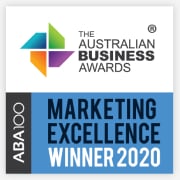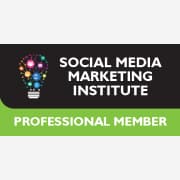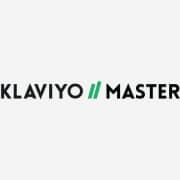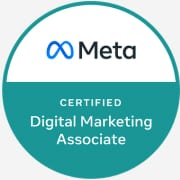Don’t Over-Optimise Your Campaigns
As tempting as it is to jump into a new Facebook ad campaign and start optimising when you’re seeing a data trend, my recommendation is to leave it alone for a few days.
Patience is a Virtue
The natural instinct of a marketer is to optimise campaigns as soon as the opportunity presents itself. This is why it can be so difficult to refrain from deactivating poor-performing ad sets and split-testing new ads within the first few days of a campaign launch.
But what if I told you that you were cutting off your nose to spite your face?
You could be causing more harm than good?
And long-term, you might have actually achieved a better result by just leaving the campaign alone?
One of the worst mistakes you can make when optimising a campaign is deactivating something that simply hasn’t had enough time to shine.
This campaign I ran is a perfect example of why you should wait three days.
The below screenshots represent the total spend and results per day.
n.b. I made no changes to the campaign, ad sets or ads during this period.
Day 1:
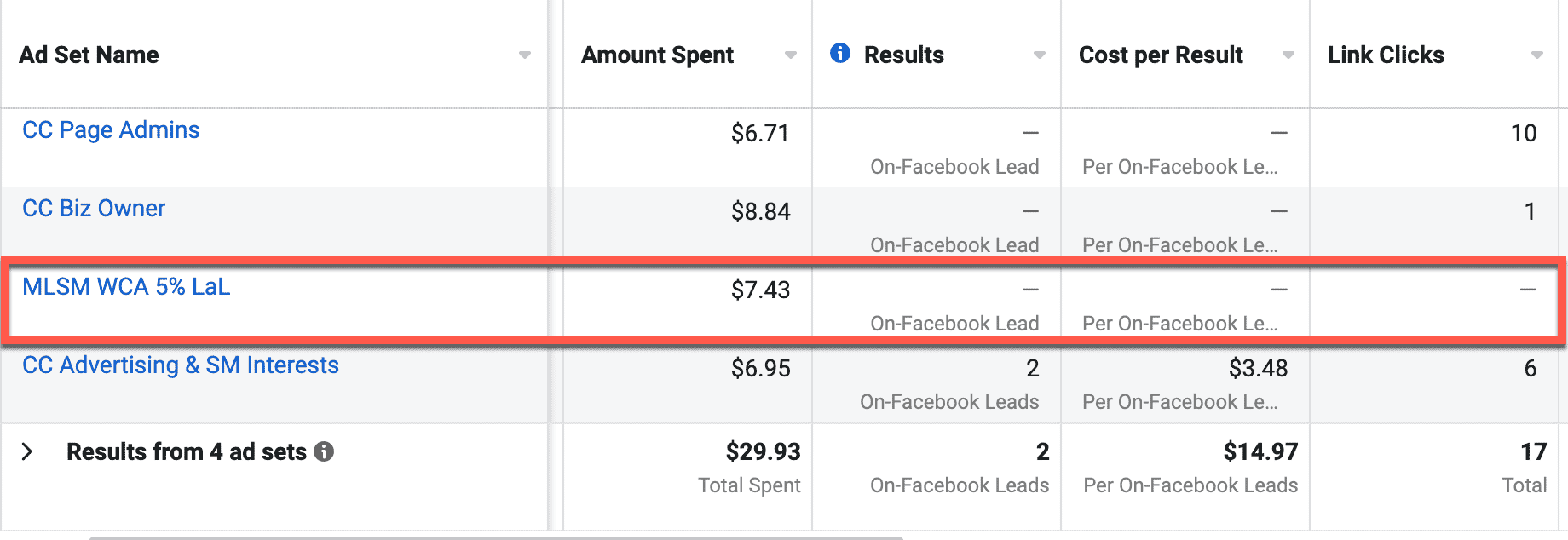
As you can see on the first day, the MLSM WCA 5% LaL (Website Custom Audience 5% Lookalike) Ad Set was the worst-performing; not even getting one link click.
Day 2:
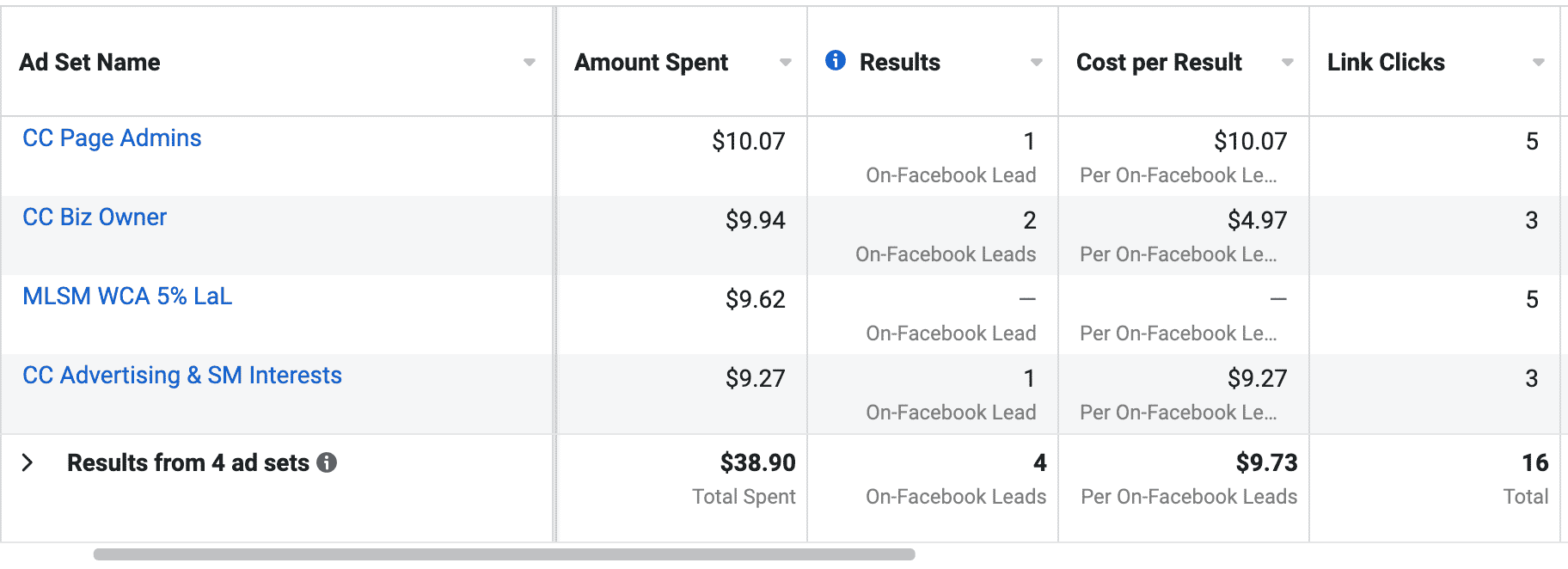
On the second day, the same ad set remained the poorest-performing.
The marketer in me wanted to deactivate this ad set and move the budget into the one that now had three leads.
Day 3:
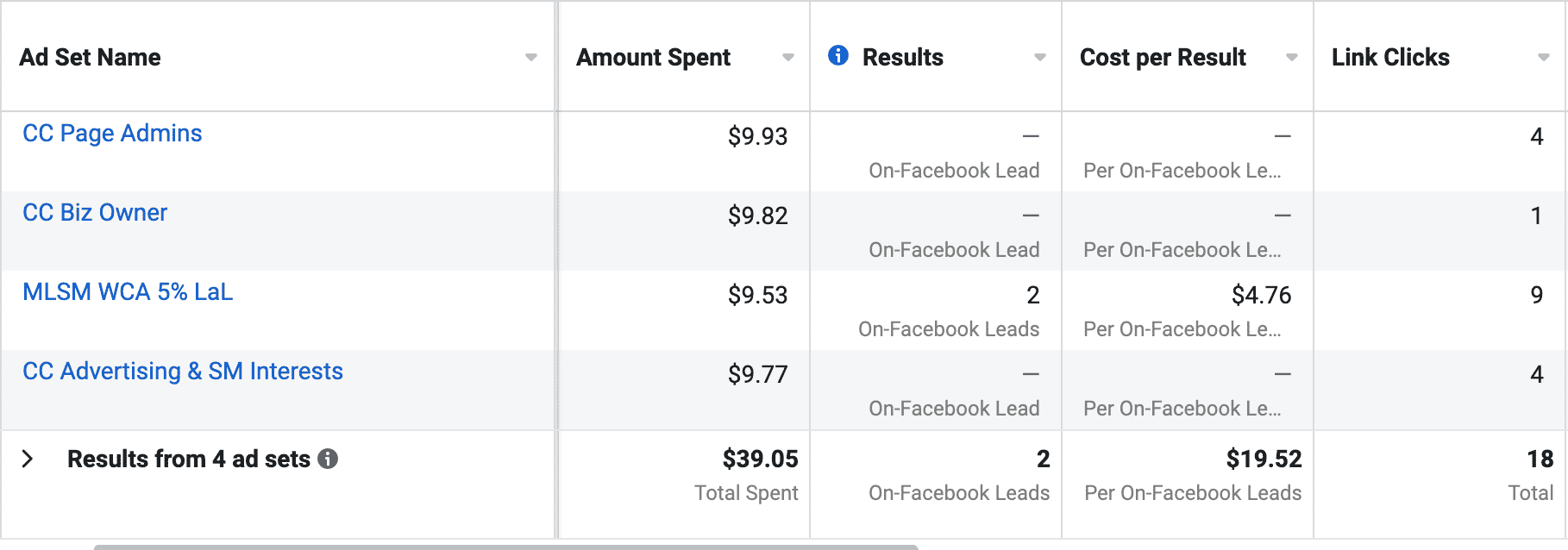
The tide has turned and on day three, this ad set was the only one that achieved leads.
Day 4:
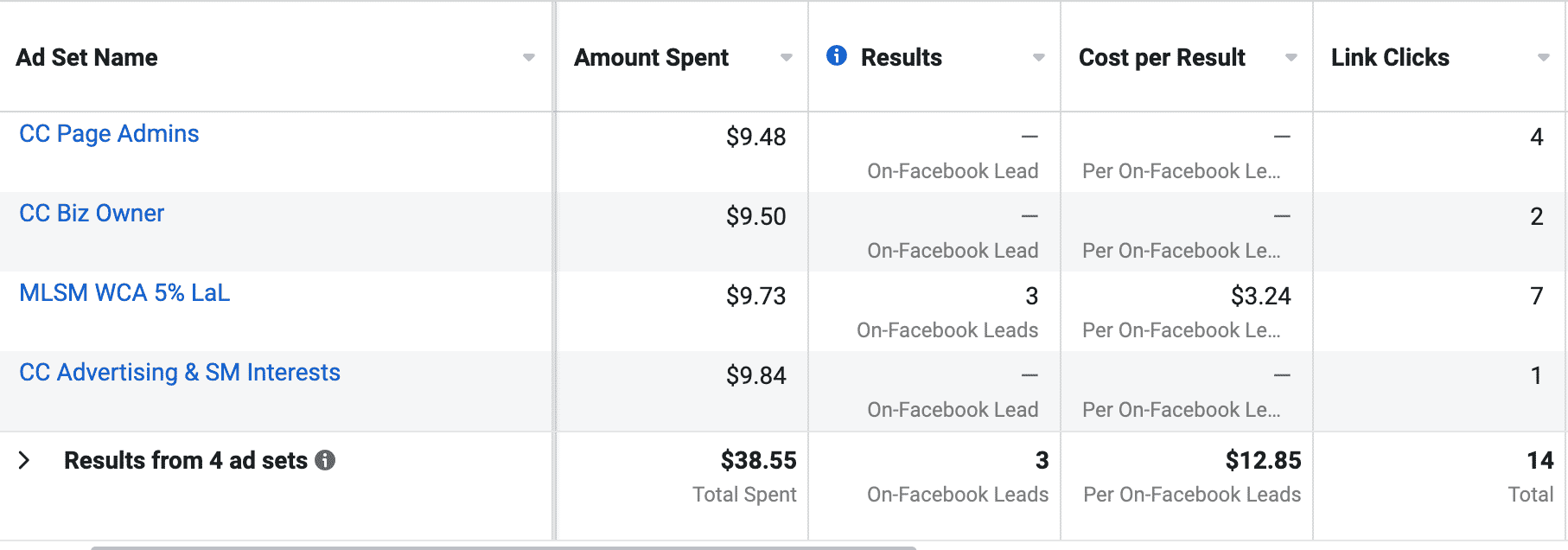
It appears the underdog is now the top dog, in fact, this ad set continued to be the top-performer moving forward.
The Data will Tell the Story
If you’re working with small budgets it means you’ll need to be even more patient because it will take you even longer to get data that is statistically significant.
How much data do you need? It depends on the metrics you’re using to analyse a campaign’s performance and also how much budget you’re prepared to spend finding out.
For example, if you’re a service-based business and you’re running a Conversions Campaign at $10 per day, wanting to have people enquire via your website contact form, it might cost you $300 per conversion, so you’d be waiting a month before you get one conversion. I.e. You’d be waiting a long time until you can optimise the campaigns based on the number of website enquiries.
However, if you set the conversion event as ‘View Content’ and the trigger as someone who clicks on a call-to-action button, or navigates to a certain page on your website, or stays on your website for a given amount of time, you’d be able to collect this data much faster and make decisions much earlier.
Know your Metrics
Knowing your metrics and how one might be a predictor of the other is vital.
Let’s revisit the previous Conversions Campaign example.
You do not need to rely on conversion events before you can optimise your campaigns; you can also analyse performance by customising your columns and assessing other basic metrics that could predict success.
For example, the cost per click of the abovementioned campaign may have been an indicator of which ad set was going to perform best.
One of my own campaigns demonstrates this well:

As you can see, although the cost per Lead was only 18% higher than the Conversions Campaign, the CPC of the Lead Gen campaign was 60% higher, and this was a good predictor of how performance would continue to play out.
Long-term, you can see how the high CPC of the Lead Gen campaign impacted things:

Another metric you might use as a predictor of campaign success can be the Link CTR (click-through rate).
Check out these ads where a higher CTR gives a lower CPC.

Ideally, you’d be able to optimise every campaign based on the priority result, but often you’ll need to reverse engineer the priority optimisation metrics so you can optimise using data that is statistically significant.
I don’t have a perfect formula for optimising campaigns and there isn’t a magic number you need to look out for.
Often the confidence to optimise campaigns comes from intuition gained by years of experience.
Just be patient, pick one variable to split test, and wait a few days or until you have enough data to tell you the story of what’s performing and what’s not.
Book a Date with Your Data
It’s date night with your data… Time to make amends, promise you’ll be more patient (wait until your data is statistically significant) and won’t do things in the heat of the moment that you end up regretting (prematurely deactivating ad sets and ads). Now stick to your word and you’ll start to have a better relationship with your Facebook Ads Manager.
Also, just know that your sixth sense (intuition) for optimising campaigns will grow rapidly if you take some time to correlate data and see which metrics are predictors of success.
Lastly, when you do optimise your campaign, ensure you’ve prepared, proofread, and done your research because each time you make a Significant Edit, you’ll trigger the Learning Phase and the algorithm will need to relearn what is and is not working from scratch.
Need a hand and would like to know more about how my team and I can help?
Simply click here to book a quick 15-minute chat.
